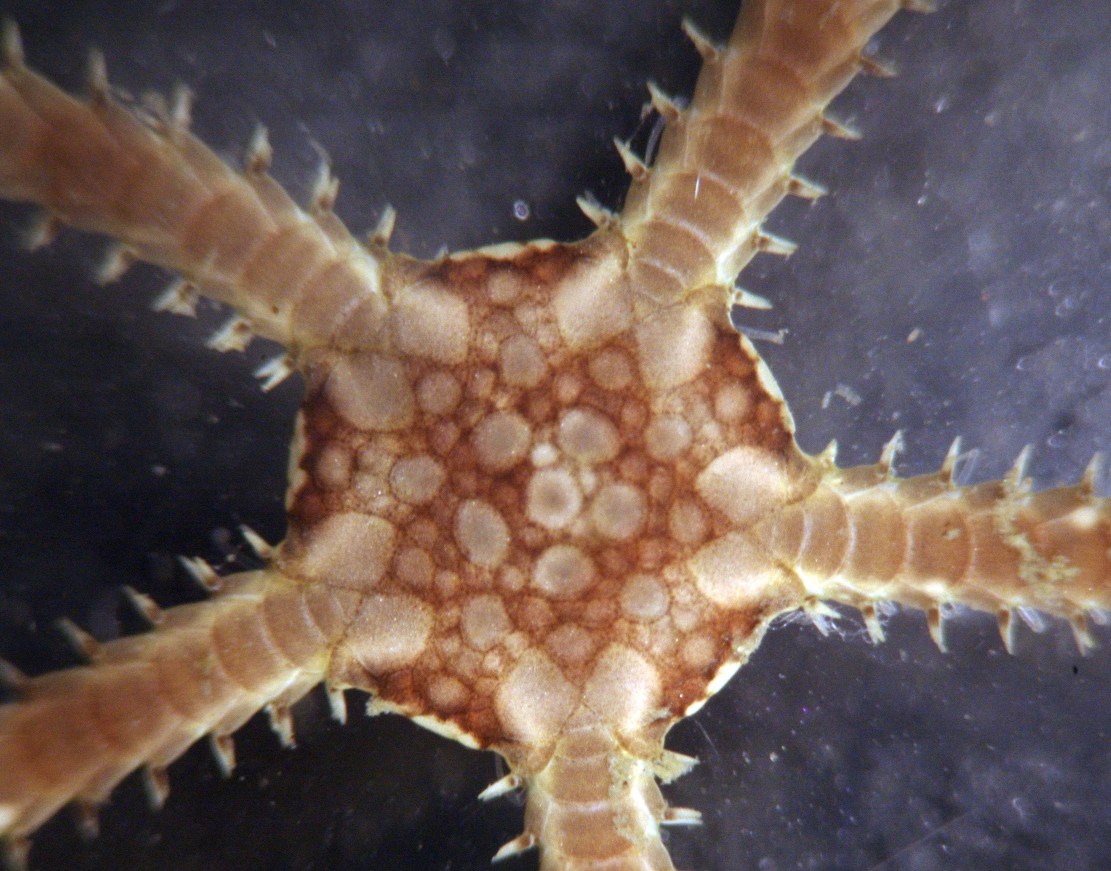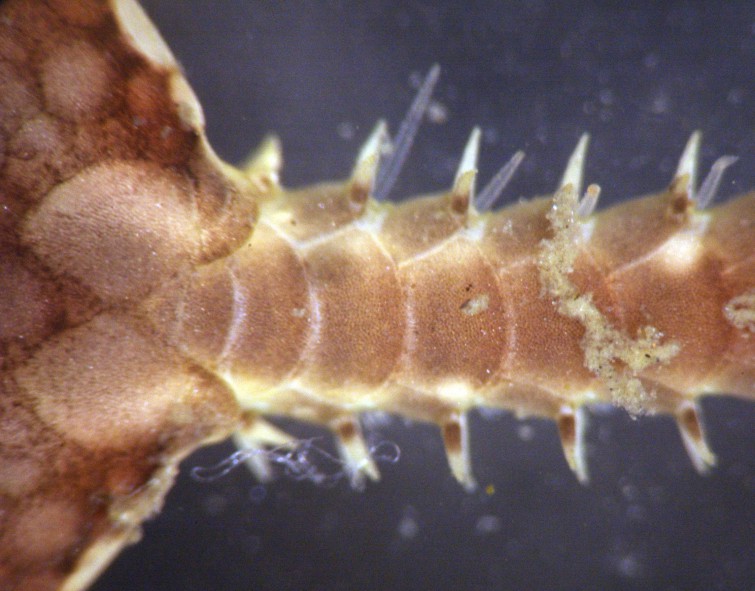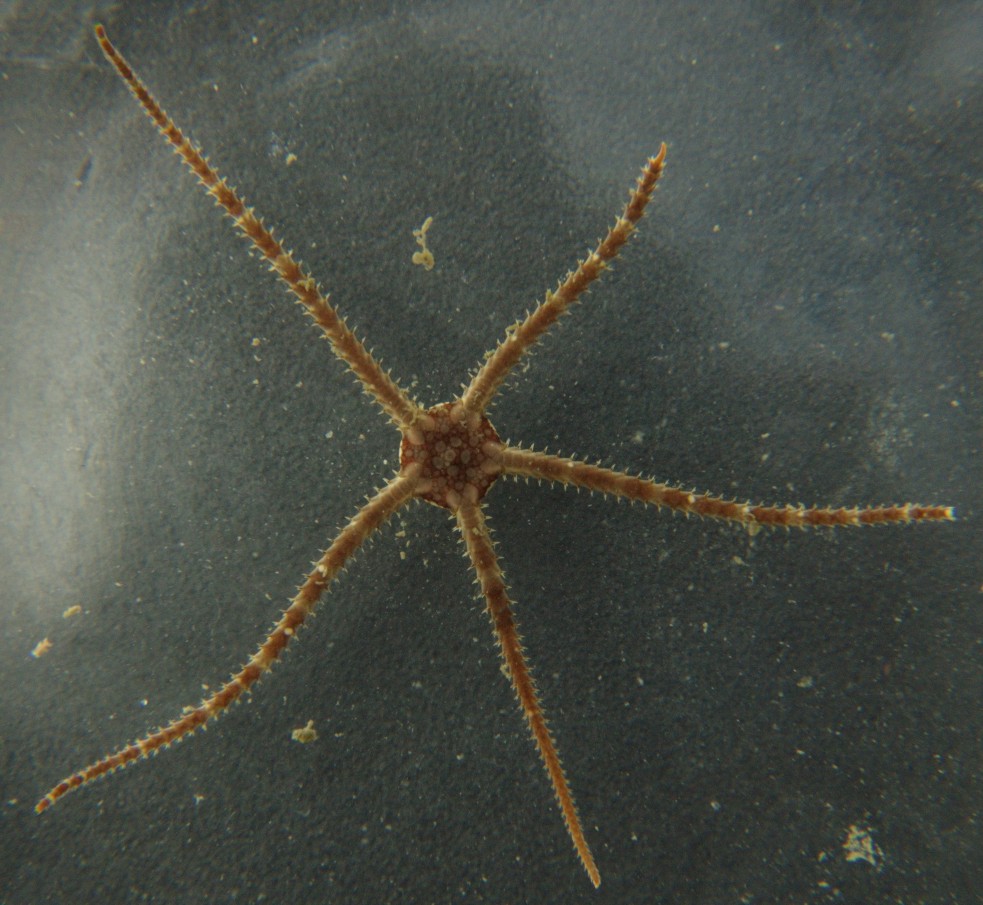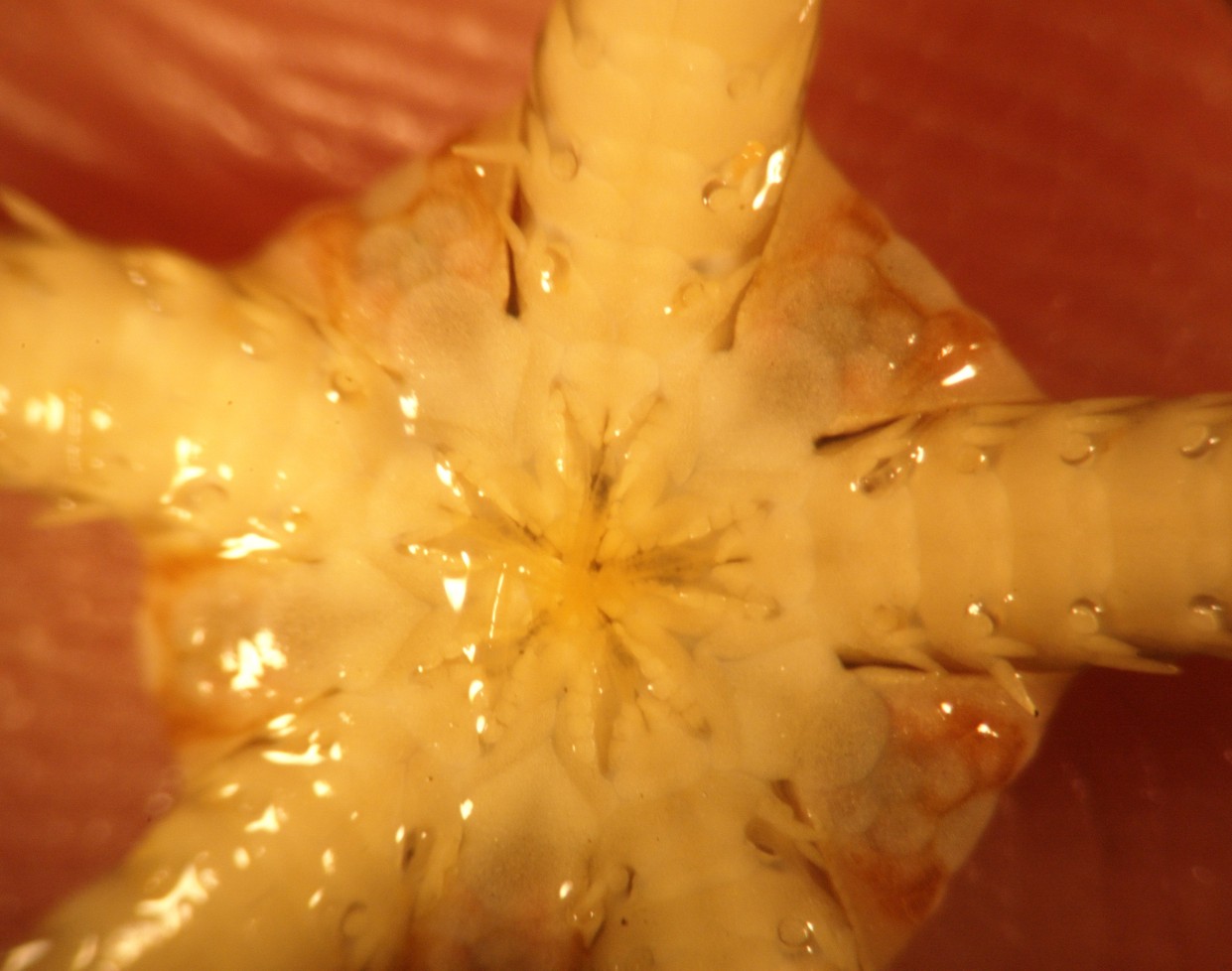Description: This arms of this brittle star insert into notches in the central disk (photo), bordered by arm combs. The oral shields are widest near the middle of the shield (photo). The spines of the arm combs are broad and blunt and touch one another from side to side, almost like small marginal plates along the edge of the arm notch. The radial shields are longer than wide and about 1/5 the diameter of the central disk(photo). Proximally they are separated by a wedge of scales and distally they are separated by part of the dorsal arm plates (photo). The arms are about 5-6x as long as wide. The large aboral plates on the arms are wedge-shaped (wider distally from the central disk) and touch one another rather than having smaller plates in-between (photo). The color is variable. Dorsally (aborally) it is usually a mottled brown or gray, often with brown or gray bands on the arms. Ventrally (orally) they are white (photo). The arm spines are brown or gray at the base with white tips
How to Distinguish from Similar Species: O. sarsii is very similar but it has separated arm comb bristles with pointed tips and the animal is usually gray without stripes on the arms.
Geographical Range: Bering Sea, Alaska to Baja California. They appear to be uncommon in California.
Depth Range: Intertidal to 1265 meters (only down to 366 meters here); usually subtidal at least 10 meters.
Habitat: Lives in or on the surface of silty sand or gravel.
Biology/Natural
History:
May live
in dense aggregations. These eat benthic animals and
carrion.
They capture food by racing after it using their arms, then looping an
arm around it and bringing it to the mouth where the jaws tear off
pieces
of flesh while the arms pull the food away.
Predators include
the Dover sole, copper rockfish, and sand star Luidia
foliolata. It has a rapid escape
response from L.
foliata.
| Return to: | |||
| Main Page | Alphabetic Index | Systematic Index | Glossary |
References:
Dichotomous Keys:Flora and Fairbanks, 1966
Kozloff, 1987, 1996
General References:
Lamb
and Hanby, 2005
Lambert
and Austin, 2007
Scientific Articles:
Web sites:
General Notes and
Observations: Locations,
abundances, unusual behaviors:

A closeup of the aboral side of the central
disk. Note that the radial
shields (paired large central
disk plates at the base of each arm) are longer than wide,
and that
their proximal ends are separated by a wedge-shaped group of scales
while
their distal ends are separated by an extension of an arm plate.

The arms of this species extend from slots in the central disk, as seen here. The plates at the edge of the slot are lined an "arm comb" of bristles which touch the edges of the arm. In this species the bristles of the arm comb are unusually flat and squared off, and the edge of each bristle is in contact with the edge of the next bristle so it is hard to see that the arm comb is distinct from the rest of the plate. In this photo the outline of several of the bristles of the comb can be seen along the edge of the upper plate. Note also that the aboral arm plates are wedge-shaped with the widest portion of each plate distal to the central disk.
This view of the underside of the central
disk shows the white coloration on the underside.
Also note that
the oral
shields
(large plates seen between the bases of the arms) are widest near the
middle
rather than near the outer edges.
Authors and Editors of Page:
Dave Cowles (2012): Created original page
CSS coding for page developed by Jonathan Cowles (2007)
Salish Sea Invertebrates web site provided courtesy of Walla Walla University

